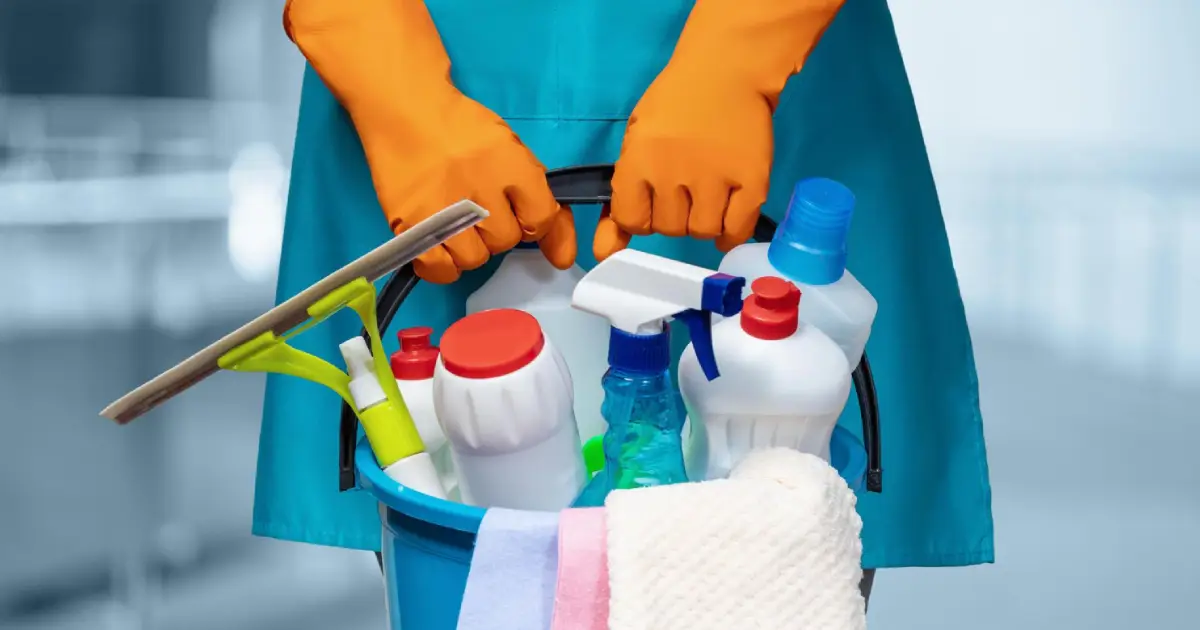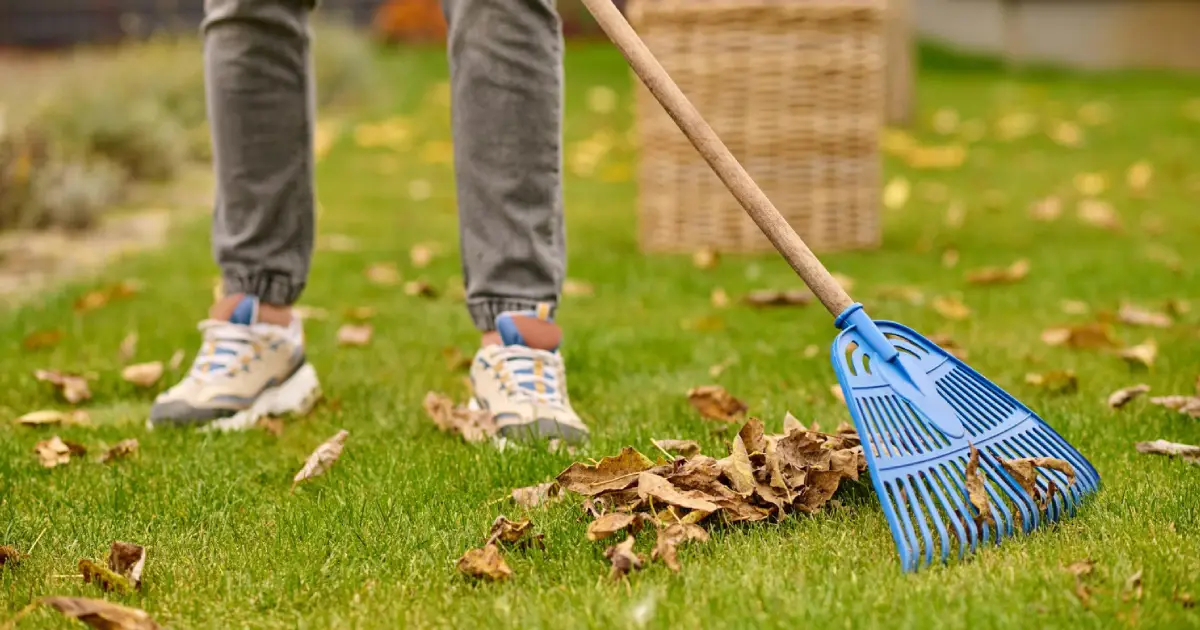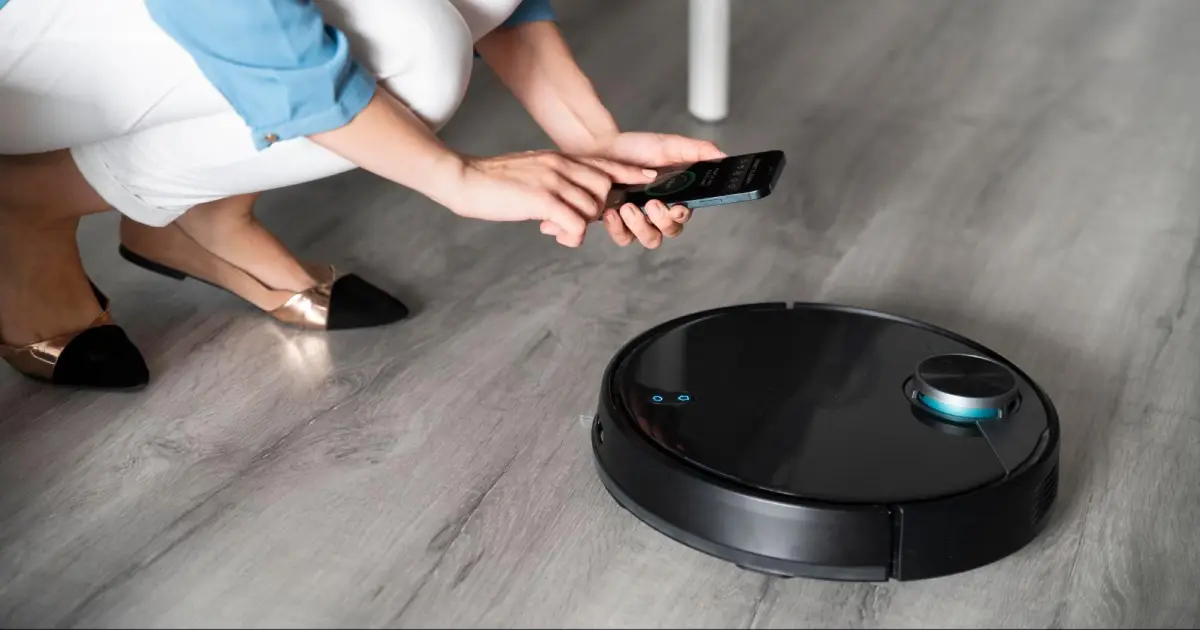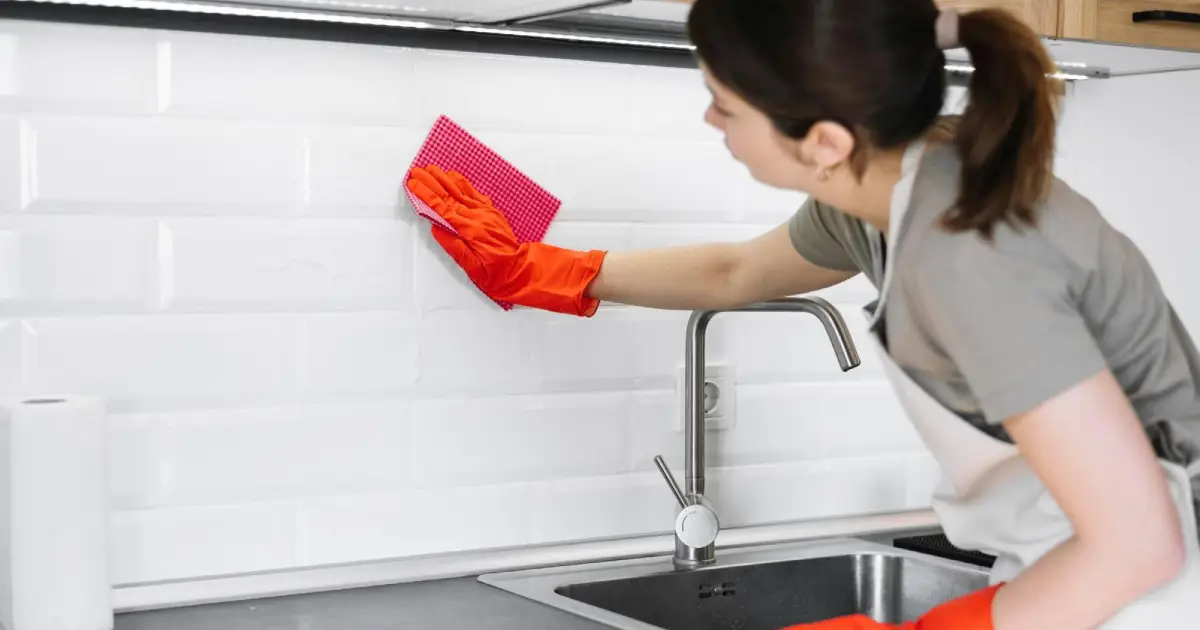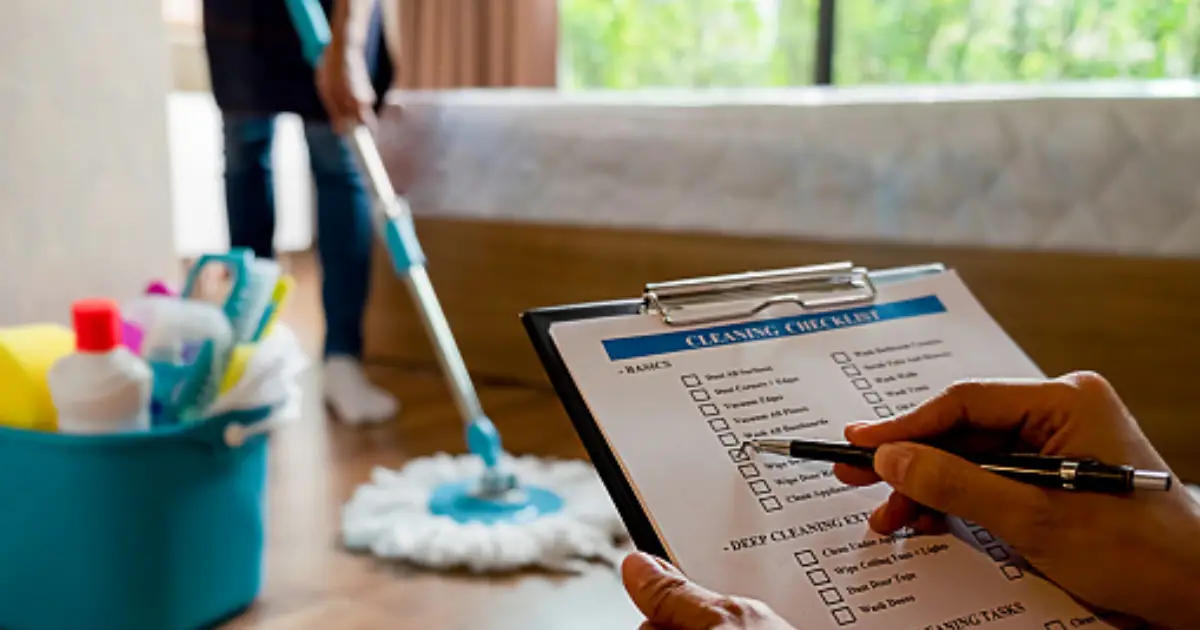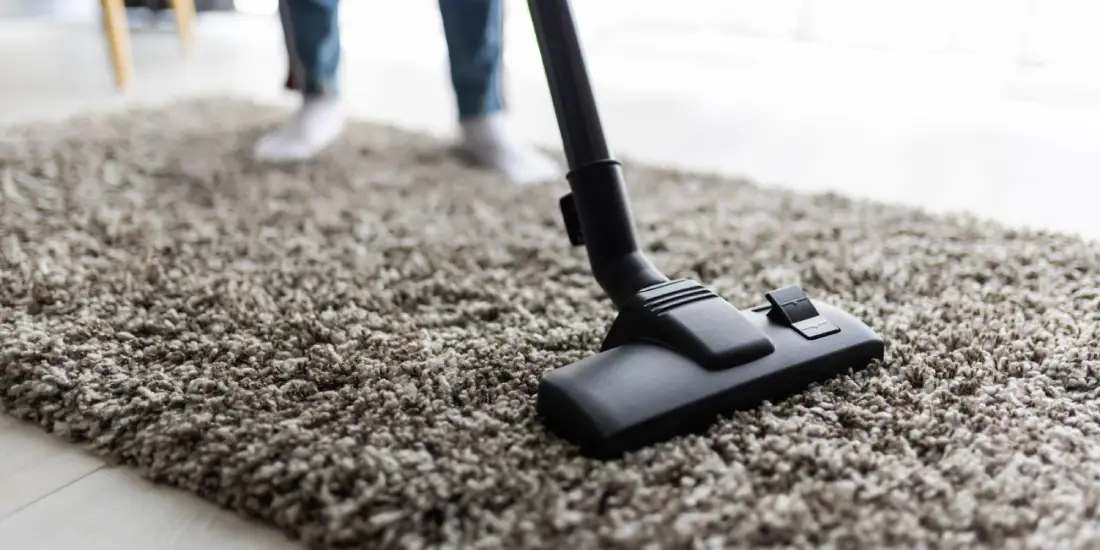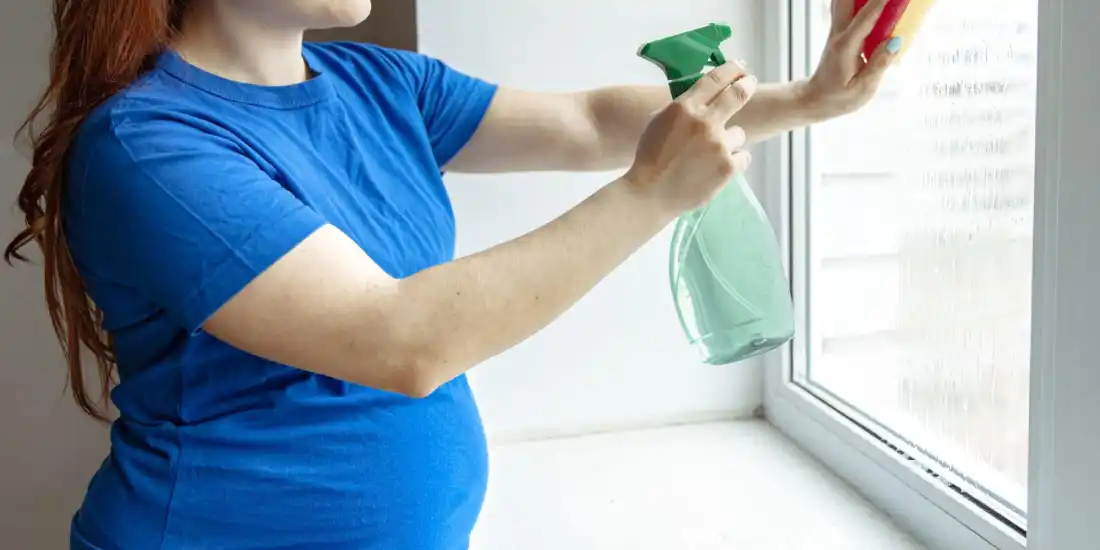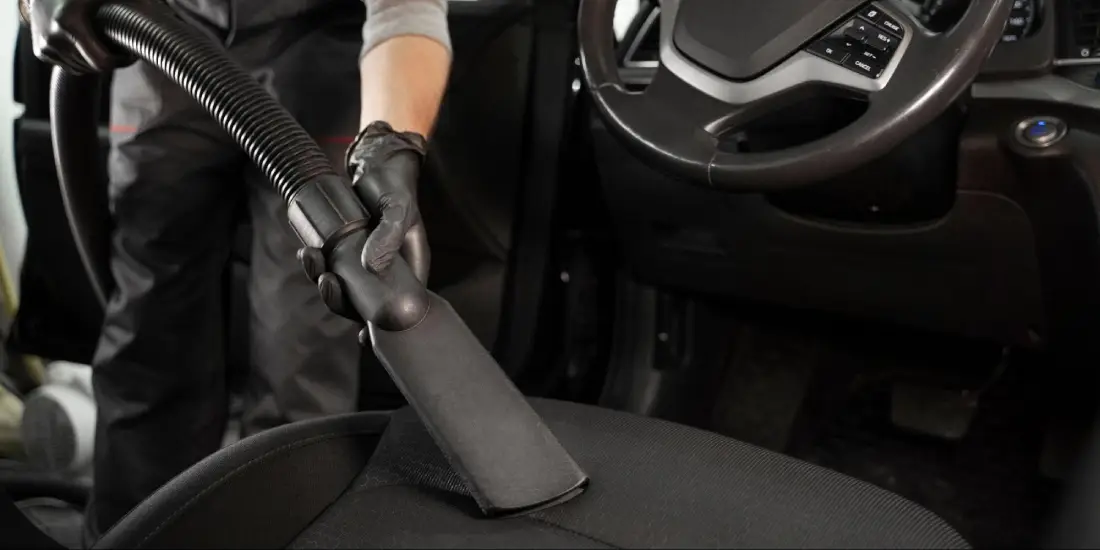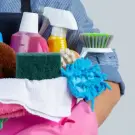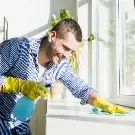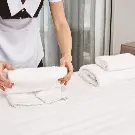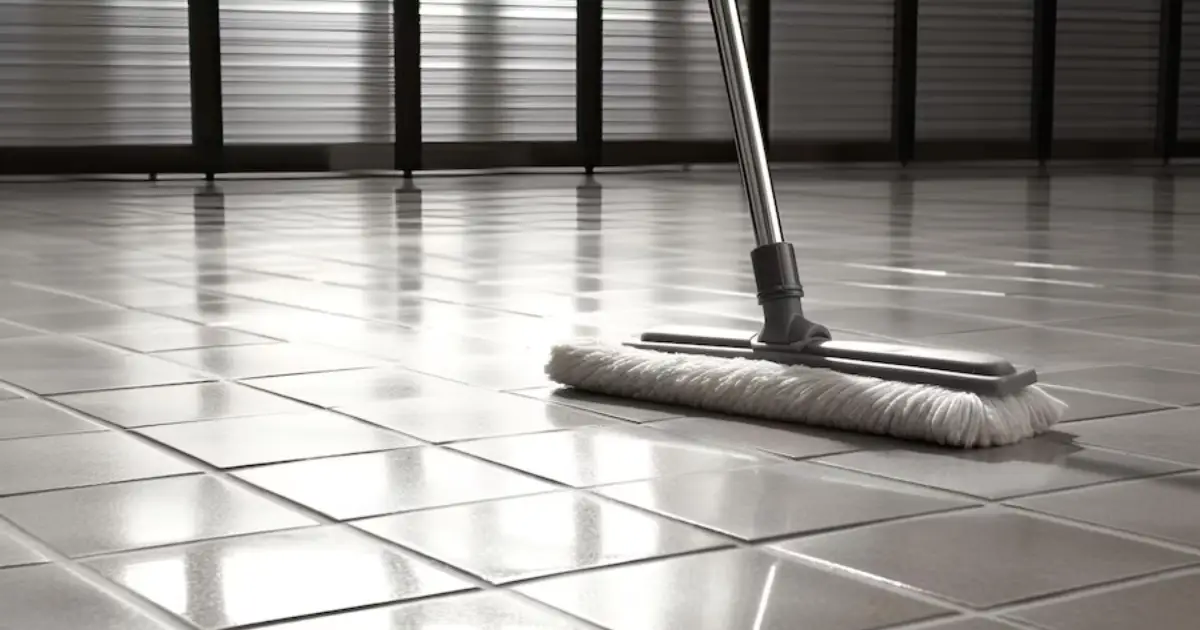
- Introduction
- Understanding Different Types of Tiles
- Preparing for Tile Cleaning
- Safety Precautions To Consider
- General Tile Cleaning Process
- Tips For Effective Tile Cleaning
- Cleaning Grout
- Preventive Maintenance
- Professional vs. DIY Tile Cleaning
- DIY Tile Cleaning
- Professional Tile Cleaning
- Conclusion
Introduction
Tiles come in many different materials as well as colours and designs. They add an air of sophistication and elegance to any room, making them a much favoured flooring option for both homes. Kitchens, bathrooms, living rooms, and outdoor areas are just a few of the places in our homes and offices where tiles can be placed. They enhance our surroundings and provide visual appeal, but they can also gather dirt, dust, and stains over time that detract from their cleanliness and attractiveness. The need to keep clean tiles goes beyond aesthetics to promote a safe and healthy environment. Clean tiles help keep your space overall clean, stop the growth and spread of dangerous bacteria, lessen the risk of slips and falls, and increase the lifespan of your tile surfaces. Understanding the fundamentals of tile cleaning is crucial for the maintenance of your property, whether you're a homeowner or a company owner.
In this comprehensive guide to tile cleaning, we will examine all facets of tile maintenance, from identifying the different kinds of tiles to choosing the best cleaning supplies and employing efficient cleaning methods. This guide will provide you with the knowledge and abilities necessary to restore the shine of your tiles and keep them looking their best, regardless of whether you're working with ceramic, porcelain, natural stone, or any other tile type.
Understanding Different Types of Tiles
There are many types of tile materials, each with certain qualities and shortcomings. For good upkeep and repair, it is extremely important to comprehend these variations. The first step to doing proper maintenance is to understand the traits and weaknesses of various tile materials. To increase the lifespan and maintain their best appearance, each variety requires specific maintenance and cleaning techniques. Let's become familiar with some of the most popular tile materials, focusing on their distinguishing features and apparent weaknesses.
Ceramic Tiles
Ceramic tiles are versatile and sturdy building materials that are generally made of clay before being moulded and baked in kilns. They are available in both glazed and unglazed forms, and there are several size, shape, and design variations. Due to its low cost, simplicity of maintenance, and resistance to wear and tear, ceramic tiles are frequently used for floors, walls, and worktops in residential and commercial buildings. They are an increasingly popular choice for interior design and construction projects since they offer aesthetic appeal through a variety of colours and patterns in addition to utilitarian advantages. Although ceramic tiles are noted for their durability, when exposed to heavy impacts, they are prone to chipping or splitting. In addition, if the grout between the tiles is not thoroughly sealed and maintained, it can discolour with time.
Porcelain Tiles
Porcelain tiles are a form of ceramic tile that is manufactured from fine clay and fired at high temperatures for extreme durability and water resistance. They are renowned for having extraordinary resilience, making them excellent for various uses, including floors, walls, and outdoor areas. Porcelain tiles are available in a wide range of sizes, hues, and designs, and frequently replicate the appearance of natural materials. Their durability and resistance to wear, scratches, and water damage offset their higher initial cost and make them a more cost-effective option in the long term than regular ceramic tiles. Even while porcelain tiles are extremely durable and moisture-resistant, they can nevertheless break or chip under extreme pressure. Additionally, it is advised to seal the grout lines to stop stains and preserve their spotless appearance.
Granite Tiles
Granite tiles are admired for their tenacity and aesthetic appeal since they are made from durable and beautiful granite stone. They come in a variety of colours and patterns due to their natural quartz, feldspar, and mica makeup, which makes them a practical material for counters, flooring, walls, and outdoor places. Although they are more expensive due to their excellent lifespan, heat and scratch resistance, and timeless appeal, they provide enduring elegance and longevity. Despite their resilience, granite tiles are susceptible to damage from hard impacts, could become stained if not sealed or cleaned properly, and can become sensitive to intense heat or sudden temperature changes. To mitigate these vulnerabilities, proper maintenance is essential, including sealing and careful handling.
Marble Tiles
Marble tiles are renowned for their classic beauty and opulent look since they are made from magnificent and naturally occurring marble stone. These tiles have a wide range of colours and veining patterns, giving interior spaces a sense of refinement. Although they are softer than some other natural stones, they can still maintain their beauty and lifespan with the right care, such as sealing and thorough cleaning. Marble tiles are a popular option for people looking to enhance the elegance of their homes and commercial spaces, even though they are a more expensive premium material with excellent visual appeal. If not properly sealed and maintained, marble tiles are prone to water damage, corrosion from acidic substances, staining from spills, and scratches. Additionally, they cost more than other materials, and often require additional maintenance and care.
Vinyl Tiles
The affordability, adaptability, and durability of vinyl tiles make them a popular choice for resilient flooring. They come in many varieties and are made of synthetic materials, including Luxury Vinyl Tiles (LVT), which closely resemble real materials like stone or wood. Vinyl tiles give a variety of design options, are easy to maintain, and feel smooth underfoot. They are renowned for fitting in well with business settings and busy streets. The cost-effectiveness and ease of installation of vinyl tiles are further benefits. While their production could have an impact on the environment, there are eco-friendly solutions too. Despite their durability, vinyl tiles can be pierced or scratched by sharp objects, and excessive heat can cause warping or discolouration. Therefore, it's important to use caution while handling sharp objects and shield them from extreme heat to preserve their beauty and functionality.
Mosaic Tiles
Mosaic tiles are small ornamental tiles known for their adaptability and artistic possibilities manufactured from materials including glass, ceramic, stone, or metal. They create complicated patterns and designs on walls, floors, and other surfaces with a variety of shapes and sizes, providing both practicality and aesthetic appeal. From swimming pools and kitchens to bathrooms and kitchens and creative murals, mosaic tiles are used in a variety of settings. Their visual impact and historical significance make them a prized medium for adding texture, colour, and personality to interior and exterior spaces—even though installation can be tedious. Depending on the material used, mosaic tiles have different vulnerabilities. Glass mosaic tiles can be brittle and prone to breaking or chipping when hit. Natural stone mosaic tiles, on the other hand, require routine sealing and upkeep to avoid stains and deterioration.
Preparing for Tile Cleaning
To guarantee that the cleaning procedure is effective, efficient, and safe, it is essential to prepare the tile. The right planning can help you save time and get the best possible outcomes while cleaning the tiles in your bathroom, kitchen or any other space. You'll be able to clean tiles effectively and get the best outcomes if you thoroughly prepare for the work. The risk of harm to your surfaces or the surrounding areas is reduced with proper preparation, which increases the likelihood that your tiles will be cleaned efficiently. Here are step-by-step instructions on how to get ready for cleaning tiles:
- Plan Your Cleaning Route: Plan a reasonable cleaning path for larger spaces to prevent walking on recently cleaned tiles. To avoid re-soiling, start at one end and move towards a doorway.
- Gather Your Supplies: Make a list of the cleaning goods and equipment you'll require. A mop, bucket, scrub brush, cleaning solution, water, grout brush, microfiber cloths, and safety equipment including gloves and goggles, are just a few of the standard supplies. Make sure the cleaning solutions you intend to employ are suitable for the kind of tile you are cleaning.
- Ventilate the Area: Ensure that the location has adequate ventilation if you're using any cleaning solutions that emit strong odours. Open the windows and doors to let fresh air through, particularly in small rooms like bathrooms.
- Remove Obstacles and Furniture: Remove any obstructions, such as furniture, rugs, and ornamental items, from the area. You will have full access to the entire tile surface as a result. Move furniture so that you can clean underneath it when cleaning floor tiles. To preserve the tiles and make moving large objects simpler, use furniture sliders or pads.
- Sweep or Vacuum: To get rid of loose dirt, dust and debris before beginning a wet cleaning, sweep or vacuum the tiled surface. This keeps them from turning into mud when used with a cleaning agent.
- Test a Small Area: It's a good idea to try any new cleaning methods or products on a small, discrete section of the tiles first to be sure they won't have any unfavourable consequences like damage or discolouration.
- Mix Cleaning Solutions: To avoid residue buildup on the tiles, always follow the manufacturer's directions especially if the process involves mixing cleaning agents with water or other cleaners. Additionally, carefully follow every precaution or warning listed on the safety labels and instructions on your cleaning products, and wear the proper safety gear as necessary.
Safety Precautions To Consider
To protect yourself and others while guaranteeing a smooth and accident-free cleaning operation, following safety precautions is of the utmost importance when cleaning tiles. Consider the following important safety measures when cleaning tiles:
- Always read and abide by cleaning product labels, since they could include particular warnings and suggested safety equipment.
- When using cleaning solutions with strong fumes, make sure there is enough ventilation by opening windows and doors.
- Wear safety equipment, such as gloves that can withstand chemicals, safety glasses or goggles, and a mask or respirator if necessary.
- Store cleaning supplies securely, with tight-fitting lids and caps, away from children and pets.
- When transferring cleaning solutions, accurately label the containers to avoid confusion.
- Use caution when handling cleaning supplies to avoid accidents and trip risks.
- When operating electrical equipment next to water sources, use caution around electrical outlets.
- Put up warning signs in wet places, take care to avoid slipping, and use towels or mats to prevent slipping.
- Children and pets should stay away from the cleaning area because cleaning supplies might be dangerous if consumed.
- Learn where the first aid kits are located and where the emergency exits are, and be prepared for small injuries.
- Respond quickly to spills, mishaps, or injuries by cleaning up any messes and offering assistance as required.
- Follow local restrictions while disposing of cleaning waste and containers, especially when disposing of potentially hazardous waste.
General Tile Cleaning Process
To properly remove dirt, filth, and stains from different types of tiles, the standard tile cleaning procedure involves several steps. This procedure can be modified to fit your needs whether you're cleaning floor tiles, wall tiles or tiles in a particular location like a bathroom or kitchen. Depending on the type of tile and the intensity of the stains or filth, the general tile cleaning procedure may vary slightly. However, by following these instructions, you can maintain the tiles in your house or office looking neat and beautiful. Always put safety first by wearing the proper cleaning supplies and protective gear as necessary. Here's a step-by-step guide:
Step 1: Prepare the Area
It's important to have a tidy and easily accessible workspace before starting the cleaning procedure. Remove any barriers from the area you want to clean, such as furniture and ornamental items to have unrestricted access to the full tiled surface. After that, thoroughly sweep or hoover the tiled area to get rid of any loose dust, grime and debris. This initial step ensures a more efficient cleaning process by preventing these particles from developing into a muddy mess when they come into touch with the cleaning solution.
Step 2: Pre-Treat Stains
A pre-treatment step can do wonders for tiles affected by tenacious stains or blemishes. To target these troublesome spots, consider using a stain remover or making a paste of baking soda and water. Before beginning the general cleaning procedure, give the pre-treatment solution some time to set so it can get into and loosen the stains.
Step 3: Prepare the Cleaning Solution
The cleaning solution is the key to any successful tile cleaning project. Follow the manufacturer's directions exactly when preparing it, especially if it calls for dilution with water. Make sure you're using the right solution and the right dilution ratio because different tile kinds might require different cleaning products. This step is essential to getting the cleaning results you want.
Step 4: Test in a Small Area
Exercise caution by carrying out a test in a small, discrete area before deciding to use your prepared solution to clean the entire tiled surface. By taking such measures, you can be certain that the cleaning agent won't have any unfavourable impacts on your tiles, including discolouration or damage. It's a helpful routine to help you move forward with confidence.
Step 5: Apply the Cleaning Solution
Now that it is prepared, it's time to apply the cleaning solution to the tiles. Apply the solution evenly throughout the surface, beginning at one end. Depending on your personal choice and the size of the area you're cleaning, you can choose to utilise a mop, sponge, or sprayer. Ensuring an even application sets the stage for an effective cleaning process.
Step 6: Scrub the Grout (if needed)
This procedure is essential for bringing back the shine of grout lines on tiles with grout. Focus on eliminating dirt and stains from the grout lines by gently cleaning them with a grout brush or an old toothbrush. For better results, use a specialised grout cleaner for grout that is severely discoloured or has mildew problems.
Step 7: Agitate and Let It Sit
Give the cleaning agent some time to soak into the tiles. You can distribute the mixture evenly over the tiles at this stage with a mop or brush. This extra step helps to further loosen dirt, grime, and stains so they can be removed effectively.
Step 8: Scrub the Tiles
It's time to begin washing the tiles once the cleaning solution has fully dried. Use a mop or scrub brush and move it back and forth gently. Pay particular attention to locations where there are stains or accumulations of dirt. On soft or sensitive tile surfaces, it's essential to avoid using abrasive equipment or brushes since this could result in damage.
Step 9: Rinse with Clean Water
After you've scrubbed the tiles, carefully rinse them with clean water. This step is essential for getting rid of any lingering cleaning solution and loose particles. To reduce the chance of accidentally spreading dirt back onto the tiles, be careful to change the rinse water in your bucket as needed. Your tiles will look clean and residue-free after a thorough rinse.
Step 10: Dry the Tiles
The tiles must be properly dried in order to guarantee a spotless finish. Utilise dry, clean microfiber towels or cloths for this task because they absorb moisture and aid in preventing water spots and streaks, especially on glossy tile surfaces. This drying process is the final touch that contributes to the tiles' overall cleanliness and shine.
Step 11: Final Inspection
It's advisable to conduct a last assessment before you complete your cleaning task. The tiles are meticulously examined during this check to make sure that all marks and debris have been completely cleaned. Take the chance to touch up and deal with any missing spots or lingering stains as soon as you notice them. This last step makes sure that your tiles are spotless and have the best appearance.
Step 12: Replace Furniture and Décor
You can start the process of returning the space to its former state once the tiles are fully dry. This involves putting back any furniture, rugs, or decorative items that you had earlier removed. To create a well-organized and aesthetically pleasant workplace, take care to position them correctly.
Tips For Effective Tile Cleaning
- Pre-Treat Stains: Pre-treating stains will help you get rid of them faster. Use a stain remover that is suitable for the job or a baking soda and water solution. Before cleaning, let it sit for a while.
- Correct Diluting: Dilute cleaning agents according to the manufacturer's instructions. To prevent residue buildup on tiles, it's essential to use the proper dilution ratio.
- Gently Scrub: When cleaning tiles, move your hand back and forth slowly. Pay close attention to any places that are stained or dirty. To prevent damage, stay away from using abrasive equipment or brushes on sensitive tile surfaces.
- Thorough Rinse: After cleaning, thoroughly rinse the tiles with clean water to get rid of the cleaning agent and any loose dirt. To avoid transferring dirt to nearby surfaces, change the rinse water as needed.
- Regular Maintenance: Establishing a regular cleaning schedule will help you keep your tiles looking clean. Spills and stains should be quickly cleaned up in order to keep them from setting in permanently.
- Grout Maintenance: Take note of the grout lines. To stop stains and mould formation, regularly clean and seal grout.
- Protective Measures: To lessen wear and tear on tiles in high-traffic areas, think about utilising area rugs or mats. Use furniture sliders as well to safeguard tiles when moving large objects.
- Professional Cleaning: If you have difficult-to-clean tiles or need extensive cleaning, think about contacting a professional house cleaning service. They can remove stubborn stains and restore tile surfaces thanks to specialised tools and knowledge.
Cleaning Grout
Maintaining the durability and quality of tiled surfaces depends heavily on grout cleaning. First off, clear grout lines protect the beauty of the tiles by preventing stains, mould, and debris from obscuring them. Second, because grout is porous and prone to absorbing moisture, regular grout cleaning is necessary to stop the growth of mould and mildew and other health risks. Furthermore, effective grout cleaning is essential for preserving hygiene by preventing the buildup of bacteria and pathogens in locations like bathrooms and kitchens, where tiles are frequently used. Furthermore, regular grout cleaning can increase the lifespan of both the grout and the tiles, protecting the surface's structural integrity and avoiding the need for expensive tile replacements because of scuffs and other damage.
Effective grout line cleaning requires a variety of methods, including the use of grout brushes, commercial grout cleaners, vinegar and baking soda, hydrogen peroxide, steam cleaning, vinegar and baking soda. Future stains can be avoided by sealing the grout after washing. Additionally available are expert cleaning services and routine maintenance. Safety precautions should be followed when using cleaning products, including gloves and eye protection. In addition to improving the look of tiled surfaces, proper grout care maintains its durability and cleanliness.
Professional vs. DIY Tile Cleaning
DIY Tile Cleaning
DIY tile cleaning is the practice of cleaning and preserving tiled surfaces by oneself, independent of the assistance of cleaning professionals. Typically, this involves cleaning the grout and tiles with readily available cleaning supplies, equipment, and methods. The use of common household cleansers, scrubbing with brushes or mops, and using homemade cleaning solutions like vinegar and baking soda are some examples of DIY tile cleaning techniques. Although it is a cost-effective strategy, the outcomes may differ based on the level of skill and diligence applied to the cleaning procedure. DIY tile cleaning is a practical choice that gives you control over your cleaning schedule and the usage of common home items. It's practical and gives you control over the procedure, making it perfect for routine maintenance to avoid the need for deep cleaning. Eco-friendly options are an option, although their effectiveness on stubborn stains may differ. Although there is a learning curve and the opportunity for mistakes that could harm your tiles or grout, particularly when dealing with badly unclean or stained tiles, it also offers a useful learning experience.
Professional Tile Cleaning
Professional tile cleaning is the term used to describe the specialised service given by experts to completely clean and maintain tiled surfaces, including floors, walls, and worktops. In order to remove pollutants from the tiles and grout lines, these professionals make use of cutting-edge tools, cleaning agents, and processes. In addition to restoring the tiles' look, professional tile cleaning also increases their longevity and ensures a hygienic environment. While it may cost more than a DIY approach, it can restore tiles to their original condition through high-pressure steam cleaning or chemical treatments. Employing trained professionals reduces labour and time requirements since they are experts at cleaning tiles and sealing grout, which stops the growth of mould and mildew. Depending on the service package, the comprehensive service can come at a higher price but frequently includes inspections and post-cleaning checks.
Conclusion
Maintaining spotless, stunning tiles is essential for your tiled surfaces' visual appeal as well as their durability. You can prevent stains, mould growth, and irreversible damage by implementing preventive maintenance practices like routine cleaning, grout care, and utilising the right cleaning supplies. When substantial cleaning is required, think about hiring expert cleaning services. Keep in mind that maintaining your tiles not only improves the looks of your spaces but also helps to create an environment that will last longer.
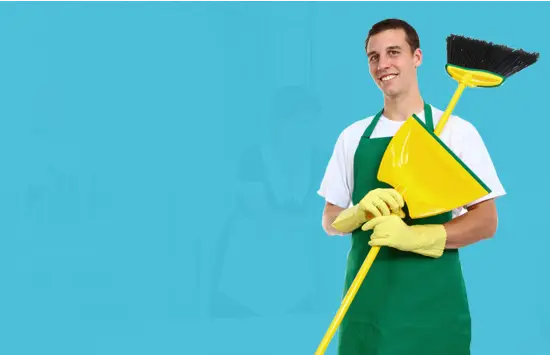
Professional Cleaning Services in Gold Coast
book now
Recent Posts
-
![Comprehensive Guide to Bond Cleaning with Ozclean]()
A Comprehensive Guide to Bond Cleaning with Ozclean
January 18, 2024
Admin
-
![blog-thumbnail]()
-
![blog-thumbnail]()
The Complete Guide to Dog Hair Removal from Office Carpets
December 28, 2023
Admin
-
![blog-thumbnail]()
Winter Cleaning Tips For Outdoor Spaces
August 03, 2023
Admin
-
![blog-thumbnail]()
Robotic Vacuums: Advantages And Disadvantages
April 14, 2023
Admin
-
![blog thumbnail]()
Tips For Cleaning Your Kitchen Efficiently And Effectively
March 30, 2023
Admin
-
![blog-thumbnail]()
Room-by-Room Cleaning Checklists for an Efficient Clean
March 08, 2023
Admin
-
![blog-thumbnail]()
Effective Ways To Remove Rust Stains From Bathtub
January 31, 2022
Admin
-
![blog-thumbnail]()
5 Effective Carpet Cleaning Hacks
January 10, 2022
Admin
-
![blog-thumbnail]()
5 Cleaning Tips For Pregnant Ladies
December 27, 2022
Admin
-
![blog-thumbnail]()
6 Tips To Choose The Ideal Vacuum Cleaner For Your Car
December 13, 2022
Admin
-
![blog-thumbnail]()
5 Benefits When You Chose Professional Roof Cleaning
May 03, 2022
Admin
